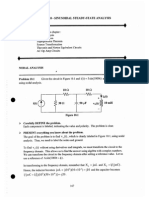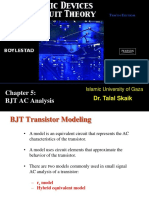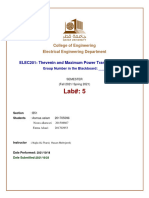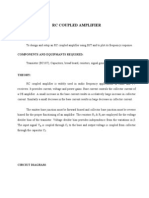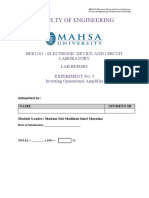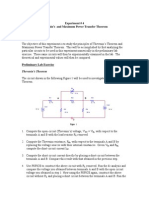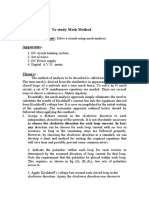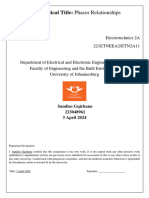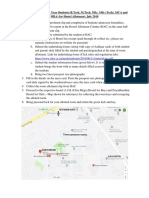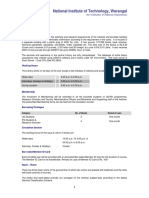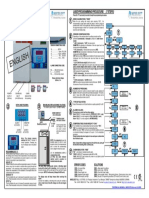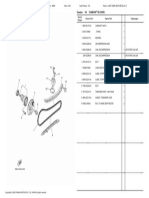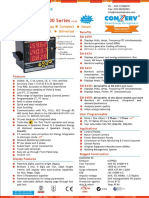0% found this document useful (0 votes)
338 views9 pagesSource Transformations PDF
20 Ω + 5 Ω = 25 Ω R1 + R2 = R12 R4 + vR5
IST1 + IST2 = IS12 6 A + 12 A = 18 A 8 Ω + R5 = R45
Use a voltage divider to find vR5:
vR5 = IS12 × (R45 / (R12 + R3 + R45))
= 18 A × (8 Ω / (25 Ω + 6 Ω + 8 Ω))
= 18 A × (8 Ω / 39 Ω)
= 36 V
Therefore, the voltage across resistor R5 (vR
Uploaded by
Sailokesh NagaruruCopyright
© © All Rights Reserved
We take content rights seriously. If you suspect this is your content, claim it here.
Available Formats
Download as PDF, TXT or read online on Scribd
0% found this document useful (0 votes)
338 views9 pagesSource Transformations PDF
20 Ω + 5 Ω = 25 Ω R1 + R2 = R12 R4 + vR5
IST1 + IST2 = IS12 6 A + 12 A = 18 A 8 Ω + R5 = R45
Use a voltage divider to find vR5:
vR5 = IS12 × (R45 / (R12 + R3 + R45))
= 18 A × (8 Ω / (25 Ω + 6 Ω + 8 Ω))
= 18 A × (8 Ω / 39 Ω)
= 36 V
Therefore, the voltage across resistor R5 (vR
Uploaded by
Sailokesh NagaruruCopyright
© © All Rights Reserved
We take content rights seriously. If you suspect this is your content, claim it here.
Available Formats
Download as PDF, TXT or read online on Scribd
/ 9






